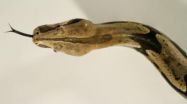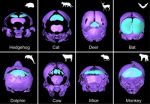(Press-News.org) WASHINGTON, D.C. – The George Washington University School of Public Health and Health Services (GW) today released a report representing consensus findings from a cross-section of stakeholders that could help transform the process used to evaluate interventions to treat obesity, a public health crisis that now affects one in three adults. The report, "Obesity Drug Outcome Measures," results from a stakeholder dialogue group convened by GW that, over a period of nine months, explored why development and approval of obesity drugs have proven so difficult.
"At a time when so many Americans suffer with obesity and are faced with limited treatment options, there has been a rising call to review the emerging science on obesity to update the framework used when evaluating obesity drugs," said Christine Ferguson, J.D., Professor in the Department of Health Policy. "The FDA, under a reauthorized Prescription Drug User Fee Act, is likely to take a wider, more comprehensive look at how drugs developed to treat obesity affect how individuals with obesity feel and function. This report may help update the risk-benefit framework."
Participants in the stakeholder group all contributed to the consensus report findings and included consumer advocates, obesity experts, researchers and clinicians. Officials from the Centers for Disease Control and Prevention (CDC), the U.S. Food and Drug Administration (FDA) and the National Institutes of Health (NIH) participated in the dialogue process, but were not asked to endorse the final report.
The consensus report outlines a series of new approaches that should be considered by the FDA when evaluating the benefits and risks of obesity drugs including:
Obesity affects everyone differently. Evaluating the benefits and risks of interventions should reflect the various considerations within the different categories of obesity based on feeling, functioning and health impairments.
Obesity drugs may provide an additional option for helping individuals who do not respond, or inadequately respond, to other interventions.
Potential pharmaceutical interventions should be reviewed as obesity treatments rather than weight loss agents and should be limited to only those for whom they are medically appropriate.
The benefit-risk evaluation of treatment with obesity drugs should extend beyond numerical weight loss to improvement in feeling and functioning.
###
About the George Washington University School of Public Health and Health Services:
Established in July 1997, the School of Public Health and Health Services brought together three longstanding university programs in the schools of medicine, business, and education that we have since expanded substantially. Today, more than 1,100 students from nearly every U.S. state and more than 40 nations pursue undergraduate, graduate, and doctoral-level degrees in public health. Our student body is one of the most ethnically diverse among the nation's private schools of public health. http://sphhs.gwumc.edu/
To view the report, visit: http://sphhs.gwu.edu/releases/obesitydrugmeasures.pdf.
GWU consensus report outlines new approaches for evaluating benefits and risks of obesity drugs
Stakeholders suggest Rx interventions be reviewed as obesity treatments not weight loss agents, limited to those for whom they are medically appropriate
2012-08-14
ELSE PRESS RELEASES FROM THIS DATE:
Potent human toxins prevalent in Canada's freshwaters
2012-08-14
Ottawa, Ontario (August 14, 2012) – Nutrient pollution, one of the greatest threats to our freshwater resources, is responsible for the algal blooms that blanket our lakes and waterways in summer months. Large blooms of cyanobacteria ('blue green algae') can cause fish kills, increase the cost of drinking water treatment, devalue shoreline properties, and pose health risks to people, pets, and wildlife. A new paper just published in the Canadian Journal of Fisheries and Aquatic Sciences shows that microcystin, a toxin produced by cyanobacteria, is present in Canadian lakes ...
Mysterious snake disease decoded
2012-08-14
A novel virus has been identified as the possible cause of a common but mysterious disease that kills a significant number of pet snakes all over the world, thanks to research led by scientists at the University of California, San Francisco (UCSF)—and three snakes named Juliet, Balthazar and Larry.
The virus, previously not thought to infect snakes at all, appears to cause "inclusion body disease." Long the bane of zoo officials and exotic pet owners, the deadly illness spreads among boas and pythons in captivity, causing micro clumps of clustered proteins to form inside ...
Moffitt Cancer Center researchers discover how cancer cells 'hijack' a mechanism to grow
2012-08-14
Researchers at Moffitt Cancer Center and colleagues at the University of South Florida have discovered a mechanism that explains how some cancer cells "hijack" a biological process to potentially activate cell growth and the survival of cancer gene expression.
Their study appeared in a recent issue of Nature Structural & Molecular Biology.
The newly discovered mechanism involves histones (highly alkaline proteins found in cells that package and order DNA), and in this case, histone H2B, one of the five main histone proteins involved in the structure of chromatin. Chromatin ...
A vaccine for heart disease? La Jolla Institute discovery points up this possibility
2012-08-14
VIDEO:
Researchers at the La Jolla Institute for Allergy & Immunology have identified the specific type of immune cells that orchestrate the inflammatory attack on the artery wall, which is a...
Click here for more information.
SAN DIEGO – (August 14, 2012) – Most people probably know that heart disease remains the nation's No. 1 killer. But what many may be surprised to learn is that cholesterol has a major accomplice in causing dangerous arterial plaque buildup that can ...
Hinode scientists' stellar effort keeps sun mission 'burning bright'
2012-08-14
Whilst the most powerful earthquake since records began hit Japan in 2011, triggering a massive tsunami which devastated much of the country, space scientists involved in one of the 'brightest' international Sun missions continued working tirelessly at the Institute of Space and Astronautical Science in Sagamihara, Japan, to capture new data from our turbulent star.
These latest Hinode results, to be discussed in a meeting at the University of St Andrews this week (Tuesday 14 August), include new data on the structure of the Sun's coronal magnetic field, obtained whilst ...
Macabre finds in the bog at Alken Enge
2012-08-14
Guided press tour
The excavation will be open to the press on Wednesday 15 August from 13.00 to 15.30.The tour starts at Alkenvej 171, 8660 Skanderborg.
...
Ship-borne measurements show EU policies have improved air quality in harbors
2012-08-14
Sulphur dioxide emissions from shipping have sharply decreased in EU ports thanks to an EU policy which limits sulphur content in fuels for ships at berth or at anchor in ports. Scientists at the European Commission's Joint Research Centre measured key air quality parameters in Mediterranean harbours before and after the entry into force of the low-sulphur requirements in January 2010. In European harbours they found an average decrease of 66% in concentrations of sulphur dioxide, a chemical compound that poses risks to health and the environment. Measurements taken in ...
Feedback can have a negative impact on performance
2012-08-14
People who give positive encouragement and constructive criticism could be wasting their breath according to the latest research from a psychology expert at Queen Mary, University of London.
The study, published in the journal Frontiers in Neuroscience, found that when people received either positive or negative feedback about their performance on complex decision-making tasks, it made their decision making worse.
Study author Dr Magda Osman explained: "The kind of task people had to perform was difficult and demanding. So, when people received positive or negative ...
Old skull bone rediscovered
2012-08-14
The mammalian skull, including that of people, is composed of about 20 bones. Fish, reptile and bird skulls, however, have considerably more. After all, when mammals evolved from reptile-like vertebrates 320 million years ago, the skull's structure became simplified during its development and the number of skull bones decreased.
Some bones were lost in the lineage leading to mammals in the course of evolution, especially a number of skull roof bones. The skull's interparietal, which is one of the skull roof bones, particularly puzzled researchers: on the one hand, it ...
UC discoveries could help quiet the world's cities
2012-08-14
They're sleek. They're fast. They're powerful. And, they are deafening. Furthermore, those Top Gun military jets need to be up in the air in the wee hours – over land – to simulate their landings on aircraft carriers. But innovations out of the University of Cincinnati's Gas Dynamics and Propulsion Laboratory are showing promise in reducing the intense noise of these supersonic jets without impacting their power. It's research that can help neighborhoods slumber a little more soundly, keep their windows rattling a little less loudly and also protect the hearing of military ...
LAST 30 PRESS RELEASES:
Scientists to ‘spy’ on cancer- immune cell interactions using quantum technology breakthrough
Tech savvy users have most digital concerns
Making lighter work of calculating fluid and heat flow
Normalizing blood sugar can halve heart attack risk
Lowering blood sugar cuts heart attack risk in people with prediabetes
Study links genetic variants to risk of blinding eye disease in premature infants
Non-opioid ‘pain sponge’ therapy halts cartilage degeneration and relieves chronic pain
AI can pick up cultural values by mimicking how kids learn
China’s ecological redlines offer fast track to 30 x 30 global conservation goal
Invisible indoor threats: emerging household contaminants and their growing risks to human health
Adding antibody treatment to chemo boosts outcomes for children with rare cancer
Germline pathogenic variants among women without a history of breast cancer
Tanning beds triple melanoma risk, potentially causing broad DNA damage
Unique bond identified as key to viral infection speed
Indoor tanning makes youthful skin much older on a genetic level
Mouse model sheds new light on the causes and potential solutions to human GI problems linked to muscular dystrophy
The Journal of Nuclear Medicine ahead-of-print tip sheet: December 12, 2025
Smarter tools for peering into the microscopic world
Applications open for funding to conduct research in the Kinsey Institute archives
Global measure underestimates the severity of food insecurity
Child survivors of critical illness are missing out on timely follow up care
Risk-based vs annual breast cancer screening / the WISDOM randomized clinical trial
University of Toronto launches Electric Vehicle Innovation Ontario to accelerate advanced EV technologies and build Canada’s innovation advantage
Early relapse predicts poor outcomes in aggressive blood cancer
American College of Lifestyle Medicine applauds two CMS models aligned with lifestyle medicine practice and reimbursement
Clinical trial finds cannabis use not a barrier to quitting nicotine vaping
Supplemental nutrition assistance program policies and food insecurity
Switching immune cells to “night mode” could limit damage after a heart attack, study suggests
URI-based Global RIghts Project report spotlights continued troubling trends in worldwide inhumane treatment
Neutrophils are less aggressive at night, explaining why nighttime heart attacks cause less damage than daytime events
[Press-News.org] GWU consensus report outlines new approaches for evaluating benefits and risks of obesity drugsStakeholders suggest Rx interventions be reviewed as obesity treatments not weight loss agents, limited to those for whom they are medically appropriate


